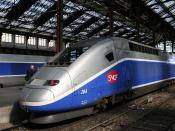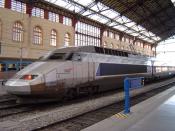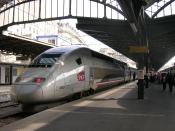The High-Speed rail and the TGV
A common issue to all transport development is the need to always go faster. The railway is a very good example. From the very beginning, the developments in the railways were driven by the need to carry goods and passenger at a faster pace than the one available at the time.
The Japanese opened the first high speed commercial Line Shinkansen service on 1st of October 1964 with a speed of 210 km/h using the French monophase theory. This mark the beginning of High-Speed rail. It will change idea and concept all over the world. The railway had given the idea it was a dying transport mode compared to aviation but suddenly a renewed interest came into it.
The first to react were the Germans with and then the French . The French were experimenting into new techniques like gas turbine for propulsion.
In 1972, an early prototype of the TGV powered by gas-turbine was being tested and reached speeds of 318 km/h. But the fuel crisis of 1974 cut short the experiments and other ways to increase the speed was thought. A lot of engineering went into the suspensions, traction, vehicle dynamics, braking, aerodynamics, signalling, and other technologies that needed to be developed to allow higher speeds.
As a result of those research the first train "Tres Grande Vitesse" (very high speed) TGV will enter service on the 27th of September 1981 carrying passenger at 300km/hour in between Lyon and Paris. In 1990 the TGV will set another world record of 512 km/h for electrical powered train and development will be made into introducing double decks wagons, carrying twice as many passengers. This is very identical to many developments in transport. Speed is first, making the mode very desirable to the people.



Twice?
Did you send it twice??
Anyways, i read it and i dont think you added any new information but overall is good! But i think you might have expanded a little more on your arguments (basically your ideas)
0 out of 0 people found this comment useful.